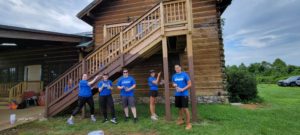 This month, volunteers from the Washington, DC office of KPMG descended on Camp William B. Snyder for a morning of service to celebrate the company’s 125th anniversary on August 2, 2022. The company offered more than 40 different volunteer opportunities that provided a chance for their team members to learn and grow before their celebratory party in the afternoon.
This month, volunteers from the Washington, DC office of KPMG descended on Camp William B. Snyder for a morning of service to celebrate the company’s 125th anniversary on August 2, 2022. The company offered more than 40 different volunteer opportunities that provided a chance for their team members to learn and grow before their celebratory party in the afternoon.
Almost 40 of their team members chose to volunteer at Camp Snyder where they helped stain the multiple wood decks at Caroll’s Cottage, cleared the landscape of invasive species in the communal area, and split logs for future campfires. All the volunteers met the spirit of the Scout Slogan to “Do a Good Turn Daily.”

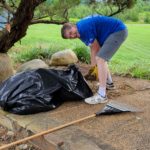
NCAC Executive Board member, Eric Rasmussen, who is a partner at KPMG, explained that he continues to be involved with the NCAC because Scouting taught him and his boys a lot. Many of the volunteers also had a connection to scouting. Some have served as scout leaders, have children in scouting, and were scouts themselves. Among the group we found the Advancement Chair for Troop 652 and a cub scout mom, Jenny, from Pack 146. One current Scout, Luke, accompanied his father for the day of service after spending the summer on staff at Goshen Scout Reservation.
We appreciate KPMG’s efforts toward improving Camp Snyder and know that their effort contributed to our ability to provide a quality program that encourages a lifetime of service to others, while building self- confidence and developing leadership skills for over 35,000 youth across the National Capital region.
confidence and developing leadership skills for over 35,000 youth across the National Capital region.
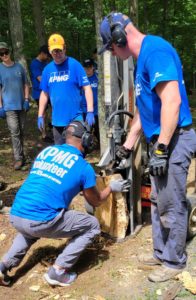


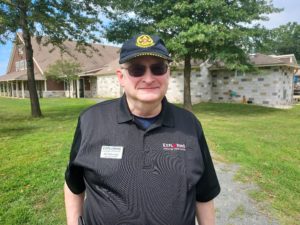 Jeff has been a Scouting Commissioner for over 25 years. In NCAC, he serves as a Unit Commissioner and Assistant District Commissioner in the Colonial District and as Assistant Council Commissioner for Exploring, STEM, Communications and Resources. Jeff is our council’s only Exploring volunteer who single-handedly manages our nearly 40 Exploring Clubs and Posts and STEM labs across our 19 districts.
Jeff has been a Scouting Commissioner for over 25 years. In NCAC, he serves as a Unit Commissioner and Assistant District Commissioner in the Colonial District and as Assistant Council Commissioner for Exploring, STEM, Communications and Resources. Jeff is our council’s only Exploring volunteer who single-handedly manages our nearly 40 Exploring Clubs and Posts and STEM labs across our 19 districts.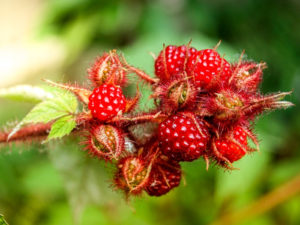 Wineberry is an Asian species of raspberry native to China, Japan, and Korea. The species was introduced to Europe and North America as an ornamental plant and for its potential in breeding hybrid raspberries. Now, it covers forest floors, stealing water and nutrients from native plants.
Wineberry is an Asian species of raspberry native to China, Japan, and Korea. The species was introduced to Europe and North America as an ornamental plant and for its potential in breeding hybrid raspberries. Now, it covers forest floors, stealing water and nutrients from native plants.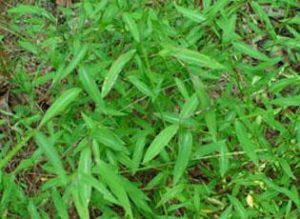 Japanese stiltgrass was originally brought to the US from Japan as packing material. The seeds were able to spread through this, and now it steals water and nutrients from native plants.
Japanese stiltgrass was originally brought to the US from Japan as packing material. The seeds were able to spread through this, and now it steals water and nutrients from native plants.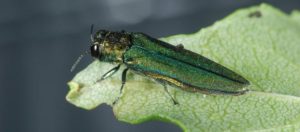 These pests have been causing mass die-offs of ash and other trees all across the US. These die-offs remove the forest leaf canopy, causing more sunlight to reach the forest floor. Due to this increased sunlight, invasive plants can spread much more easily. Nonetheless, Emerald ash borers form a lethal combo with any other invasive plant species.
These pests have been causing mass die-offs of ash and other trees all across the US. These die-offs remove the forest leaf canopy, causing more sunlight to reach the forest floor. Due to this increased sunlight, invasive plants can spread much more easily. Nonetheless, Emerald ash borers form a lethal combo with any other invasive plant species.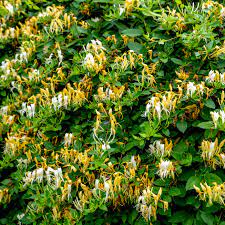
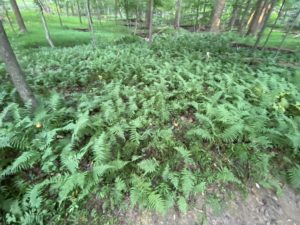 RESULT: YAY FERN!!!
RESULT: YAY FERN!!!